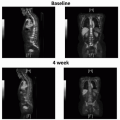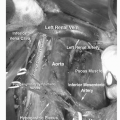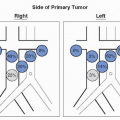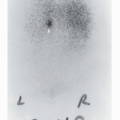Genetic Basis of Prostate Cancer
Stacy Loeb
William B. Isaacs
INTRODUCTION
Prostate cancer is a complex disease that is influenced by both genetic and environmental factors. Increasing age and African ancestry are well-documented risk factors for prostate cancer (1). Additionally, a first-degree family history of prostate cancer has been associated with approximately a twofold increased risk of the disease (2).
Early genetics research primarily used family-based study designs (such as twin studies and segregation analysis) to establish an important role for genetic influences on prostate cancer risk. However, linkage analyses of prostate cancer families, while still ongoing, have been disappointing with respect to identifying major genes as risk factors for prostate cancer.
More recently, emphasis has shifted from family-based approaches to a “Common Disease Common Variant” focus (3) employing case-control study designs. Importantly, these recent efforts have identified numerous germline sequence variants that are common in the population but are associated with only modest effects on prostate cancer risk. In the very near future, the ability of high throughput sequencing technology to search the entire genome at single base resolution will provide an unparalleled opportunity to more completely understand the role of genetic variation, both common and rare, in the etiology of prostate cancer.
In this chapter, we summarize the evidence from both family-based studies and genome-wide association studies (GWAS). We also discuss the potential clinical implications of our ever-increasing knowledge regarding the genetic basis for prostate cancer, and the future directions for prostate cancer genetics research.
EPIDEMIOLOGIC STUDIES OF FAMILY HISTORY AND PROSTATE CANCER RISK
Numerous case-control and cohort studies have established that a positive family history represents a significant risk factor for prostate cancer. In a recent systematic review, Johns and Houlston reported a pooled 2.5-fold increased relative risk for prostate cancer among men with affected first-degree relatives (2). The risk of prostate cancer was greatest among men with affected brothers (vs. fathers or sons), multiple affected relatives, or a younger age at diagnosis.
A limitation of observational studies on family history and prostate cancer risk is the potential for detection bias. Numerous professional organizations recommend earlier prostate cancer screening for men with a family history of the disease (1). In addition, studies have shown that men with a positive family history of prostate cancer are significantly more likely to seek screening than those without a family history (4). The 2009 American Urological Association PSA Best Practice Policy recommends that the decision to perform a prostate biopsy should take into account family history and other factors in addition to prostate specific antigen (PSA) and digital rectal exam results (5). Clearly, these differential screening practices could bias toward a greater likelihood of prostate cancer detection among men with a positive family history. In light of these caveats, it is important to note that among men undergoing an empiric prostate biopsy as part of the Prostate Cancer Prevention Trial, family history remained a significant independent predictor of prostate cancer detection on biopsy (6).
It is also noteworthy that family history reflects not only genetic influences but also shared environmental factors among members of a family. In this regard, twin studies have been helpful to tease out genetic from shared environmental influences by comparing the prostate cancer concordance rates between monozygotic and dizygotic twins. In a large Scandinavian twin study, Lichtenstein et al. reported a greater concordance rate for prostate cancer among monozygotic (0.18) than dizygotic (0.03) twins (7). Overall, they estimated a heritability index of 42% for prostate cancer, as compared with heritability indices of only 27% for breast cancer and 35% for colorectal cancer. Thus, this study provided further evidence as to the major contribution of genetic factors to prostate cancer susceptibility. The identification of these factors has remained a challenge for prostate cancer research.
SEGREGATION AND LINKAGE STUDIES
Segregation analysis uses mathematical models to explore the mechanism for familial aggregation of a disease. Specifically, segregation analysis can be used to assess whether familial inheritance patterns are most consistent with a major gene, polygene, or environmental model. Several early segregation analyses for prostate cancer supported autosomal dominant transmission of a major, rare high-risk allele (8,9,10); whereas, other studies have instead suggested a recessive or polygenic model of inheritance (11,12).
The evidence of a genetic risk factor for prostate cancer provided a strong basis for the study of prostate cancer families using linkage analysis to map and identify susceptibility genes for this cancer. This approach infers the location of disease genes through their joint inheritance with markers that have a known chromosomal position. Linkage studies typically report LOD scores (logarithm of the odds ratio in favor of linkage vs. no linkage) as a metric for the likelihood of linkage.
Linkage studies have led to the discovery of genes involved in several other forms of malignancy, including breast, colorectal and renal cell cancer. In contrast, linkage analysis has had more limited success in identifying reproducible genetic factors for prostate cancer (13).
The largest prostate cancer linkage study to date was a study of 1,233 families reported by the International Consortium for Prostate Cancer Genetics (ICPCG) in 2005 (14). In this study, evidence of linkage was reported in multiple chromosomal regions, including 1q25, 3p24, 5q12, 8p21, 8q13, 11q22, 13q14, 15q11, 16p13, 17q21, 22q12, and Xq12. Analysis of ICPCG families with a more aggressive phenotype found evidence of linkage at chromosome 6, 11, and
20 (15). However, the LOD scores at each of these regions were relatively modest, providing only suggestive evidence that these regions harbor susceptibility genes. Indeed, these analyses are probably more important for what they did not find. The finding of many loci, each with marginal linkage signals, is consistent with the nonexistence of a single or a small number of genes with major effects on prostate cancer risk and suggests that many genes, each with modest or small effects, may explain the majority of inherited susceptibility for prostate cancer. A role for a major gene, like BRCA1, in prostate cancer risk cannot be ruled out, however. It is possible that such a gene may be active in a subset of prostate cancer families that is more genetically homogeneous. For example, families with particularly early age of onset of aggressive disease, or families having co-occurrence of other specific cancers (e.g., kidney or bladder), may be due to a rare high-penetrance gene. Defining such subsets of cancer families has been particularly helpful in the discovery of susceptibility genes for other common cancers (e.g., MSH2 in colon cancer and VHL in kidney cancer). Findings from numerous additional prostate cancer linkage studies have been previously reviewed by Langeberg et al. (13).
20 (15). However, the LOD scores at each of these regions were relatively modest, providing only suggestive evidence that these regions harbor susceptibility genes. Indeed, these analyses are probably more important for what they did not find. The finding of many loci, each with marginal linkage signals, is consistent with the nonexistence of a single or a small number of genes with major effects on prostate cancer risk and suggests that many genes, each with modest or small effects, may explain the majority of inherited susceptibility for prostate cancer. A role for a major gene, like BRCA1, in prostate cancer risk cannot be ruled out, however. It is possible that such a gene may be active in a subset of prostate cancer families that is more genetically homogeneous. For example, families with particularly early age of onset of aggressive disease, or families having co-occurrence of other specific cancers (e.g., kidney or bladder), may be due to a rare high-penetrance gene. Defining such subsets of cancer families has been particularly helpful in the discovery of susceptibility genes for other common cancers (e.g., MSH2 in colon cancer and VHL in kidney cancer). Findings from numerous additional prostate cancer linkage studies have been previously reviewed by Langeberg et al. (13).
GENOME-WIDE ASSOCIATION STUDIES
As discussed above, the emphasis in prostate cancer genetics research has recently shifted from family-based studies to association studies. This emerging new field has been made possible through the Human Genome Project and International HapMap Project, together with substantial refinements in genotyping technology. Indeed, the commercial availability of relatively inexpensive arrays capable of genotyping up to 1 million single nucleotide polymorphisms (SNPs) in parallel have made large-scale genotyping logistically feasible.
GWAS are based on the concept of linkage disequilibrium, which occurs when a particular allele combination (haplotype) is preserved over multiple generations. The likelihood of recombination between two alleles is a function of the genetic distance between them. Accordingly, tagging SNPs that are correlated with neighboring SNPs can be used to infer an individual’s haplotype. This in turn enables relatively comprehensive measurement of genome-wide variation without having to assay all the variants. Comparing allele frequencies between ethnically matched cases and controls for a genome-wide collection of informative tagging SNPs turns out to be a very powerful means to identify disease-associated variants. An explosion of GWAS have been recently undertaken to search for variants related to a variety of common diseases, ranging from diabetes and neurological conditions to various types of cancer (16). Indeed, more than 25 loci have now been identified through GWAS that are independently associated with prostate cancer risk. The initial prostate cancer susceptibility variant identified was the -8 allele of the microsatellite DG8S737 at 8q24 (17), a region that was previously implicated by linkage in Icelandic families. The same region was implicated in African American prostate cancer patients by admixture mapping (18). GWAS led to the discovery of as many as five separate regions on chromosome 8q24 harboring variants that are independently associated with prostate cancer risk (36,37,38) Although these variants are located in a gene-poor region, their proximity to MYC suggests a potential role in the regulation of this important oncogene (19).
Subsequent GWAS reported an association between rs4430796 on chromosome 17q12 and rs1859962 on 17q24 with prostate cancer risk (20). Although all prostate cancerassociated SNPs identified to date are located outside coding regions, several lie in introns or other known regulatory regions of genes, demonstrated to play roles in prostate biology (e.g. NKX3.1 and MSMB). In addition, the rs4430796 SNP lies within the HNF1B gene and appears to be protective against diabetes.
Stay updated, free articles. Join our Telegram channel

Full access? Get Clinical Tree








